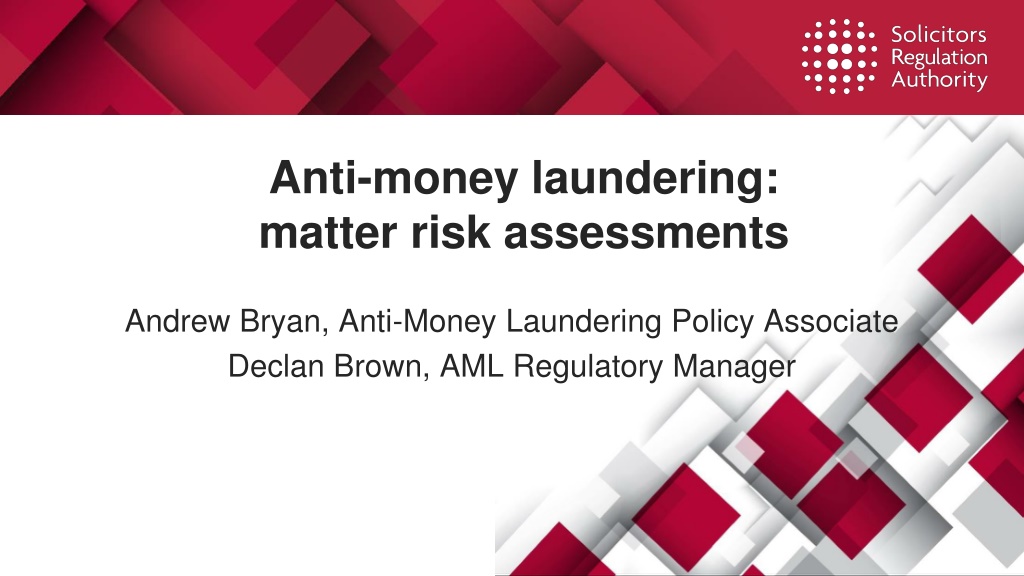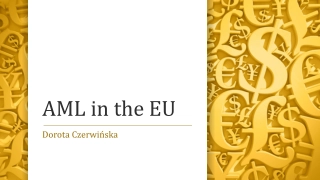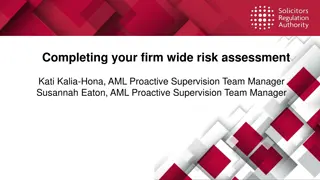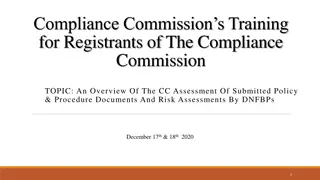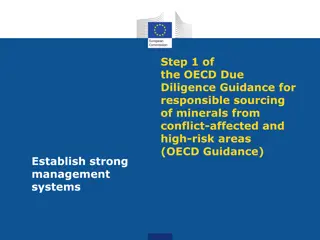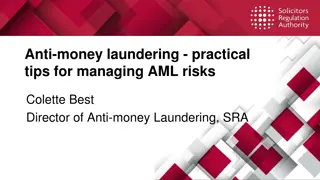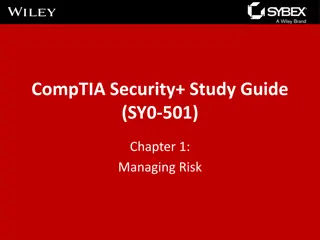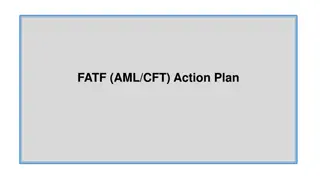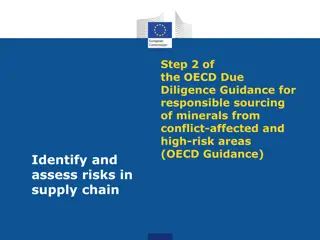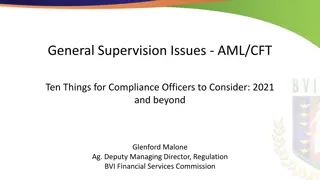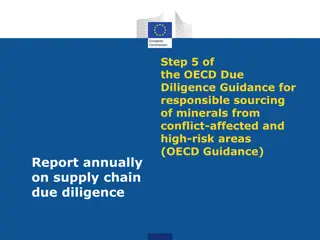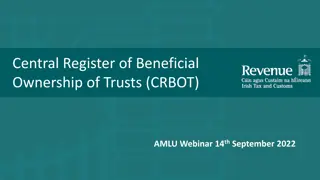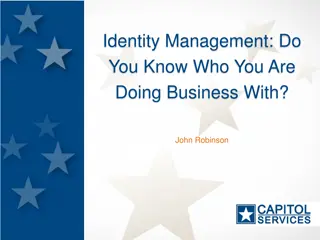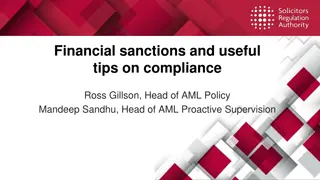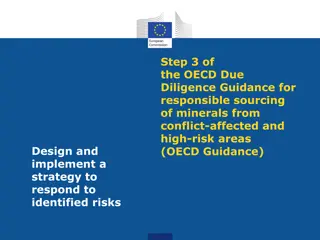Understanding AML Risk Assessments and Due Diligence Regulations
Anti-money laundering (AML) risk assessments and due diligence regulations are crucial for preventing money laundering and terrorist financing. This content discusses the importance of risk assessments, client due diligence, and regulatory compliance in the AML landscape. It emphasizes the need for firms to conduct thorough risk assessments across various factors like delivery channels, clients, geography, products, and transactions. Adherence to regulations such as Regulation 28 (MLRs) is essential for identifying and mitigating risks effectively. By following set procedures and conducting assessments diligently, firms can enhance their AML practices and comply with regulations effectively.
Download Presentation

Please find below an Image/Link to download the presentation.
The content on the website is provided AS IS for your information and personal use only. It may not be sold, licensed, or shared on other websites without obtaining consent from the author. Download presentation by click this link. If you encounter any issues during the download, it is possible that the publisher has removed the file from their server.
E N D
Presentation Transcript
Anti-money laundering: matter risk assessments Andrew Bryan, Anti-Money Laundering Policy Associate Declan Brown, AML Regulatory Manager
The AML landscape Regs are in place to prevent ML/TF We have a duty to supervise and are engaging with firms Our supervisory activities are overseen by OPBAS Most recent significant overhaul of the regs in 2017
Risk assessments National Risk Assessment from the Home Office Our sectoral risk assessment In firms: Regulation 18 - firm-wide risk assessment Regulation 28(12) - client and matter risk assessments Risk components & determination of customer due diligence
At the core of case risk Regulation 28 of the MLRs (12) The ways in which a firm complies with the requirement to take customer due diligence measures, and the extent of the measures taken must reflect (i) the risk assessment carried out by the firm under regulation 18(1); its assessment of the level of risk arising in any particular case; (ii)
What must go in it? Based on our publications, and your own regulation 18 risk assessment, consider risks across: Delivery channels Clients Geography Products Transactions
What must go in it? Other case specifics from Reg 28: purpose size of the money or assets regularity and duration of business relationship
When should I do it? Do it every matter, for every client Write it down in case anything goes wrong Make sure everybody knows how to access it Make sure everybody can read and understand it
Matter risk assessments Client Due Diligence (CDD) Regulation 28(12) and (13) MLR2017 Enhanced Due Diligence (EDD) Regulation 33(6) MLR
What we are seeing 29% of files did not contain a risk assessment No identifiable risk level on files Assuming e-verification is a risk assessment Conflicting information with FWRA
Good practice Make sure risk assessments are recorded Set out factors which fee earners must consider Review certain milestones Independent audit (Regulation 21(1)(c))
Bad practice Not documenting risk assessments Fee earners not having sight of client/matter risk assessments Pro forma documents
Questions Submit your questions through the link in the YouTube description
Your views on our Business Plan We are consulting on our draft business plan 2021/22 www.sra.org.uk/consultations Outlines how we will allocate our resources and budget Consultation runs from 6 May-25 June Tells us your views Business Plan and Budget 2021 - 22 (sra.org.uk)
